by Aoife Donnellan // Dec. 12, 2023
This article is part of our feature topic Myth.
Bassam Issa Al-Sabah works across video, painting, sculpture and textiles, creating otherworldly creatures and landscapes that examine resistance, power, time and gender. Their fantastical characters illuminate the power of self-mythologising as well as the uncanny aesthetic features of capitalist existence. Their practice prioritises world-building, allowing their characters to communicate spatially to highlight the relationship between identity and landscape.
Their latest work, ‘Uncensored Lilac’ (2023), is an exhibition collaboration between Issa Al-Sabah and Jennifer Mehigan as part of transmediale’s 2024 festival ‘you’re doing amazing sweetie.’ The show will transform the transmediale studio into a fantasy world, following a group of goddesses, set in an ever-shifting landscape. The goddesses speech is written by Jennifer Mehigan and performed by an AI voice, as the characters, created by Issa Al-Sabah, speak about their relationship to the land, femininity and isolation.
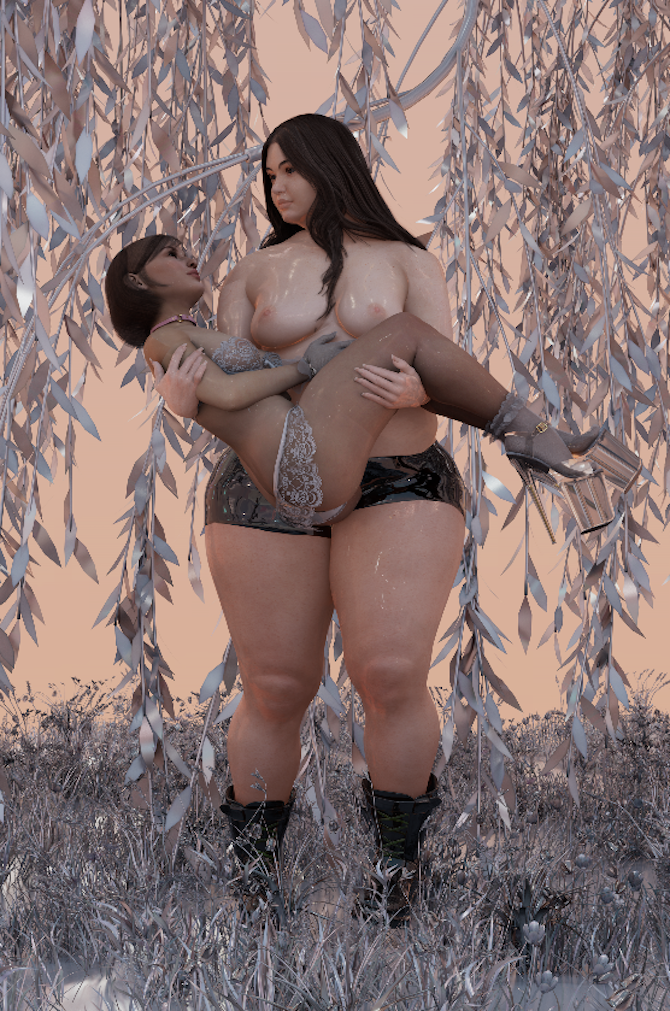
Bassam Issa Al-Sabah and Jennifer Mehigan: ‘Uncensored Lilac,’ 2023, digital render of work-in-progress // Courtesy of the artists
Aoife Donnellan: Your practice has always been grounded in world-building, notably with your recent solo show in The Douglas Hyde ‘IT’S DANGEROUS TO GO ALONE! TAKE THIS’ (2023). How have the themes in your practice developed over time?
Bassam Issa Al-Sabah: I’ve been very lucky in that when I started becoming an artist, I fell into this exhibition-making practice. I’ve been making work, since I graduated, specifically for exhibitions. I’ve always had this end goal of knowing the space. When I first graduated, I was making a lot of quite autobiographical work but I thought there was a certain heaviness that came with showing that work because the response is very personal.
I made this work that was about the house that we left in Iraq, and then at the end my grandmother spoke, and that was in The Lab in Dublin. The responses to the work were embedded in who I am as a person. Since then, I’ve been trying to make work that’s somewhat distanced from me. I’ve been using this motif of an avatar, a figure that can be a proxy for yourself. It is also you, in the way that you can have an avatar in a game that’s related to you, but it’s very clearly not you. Since then, that’s been how I’ve been working. I make figures and create a world around them and see how these things interplay with each other.
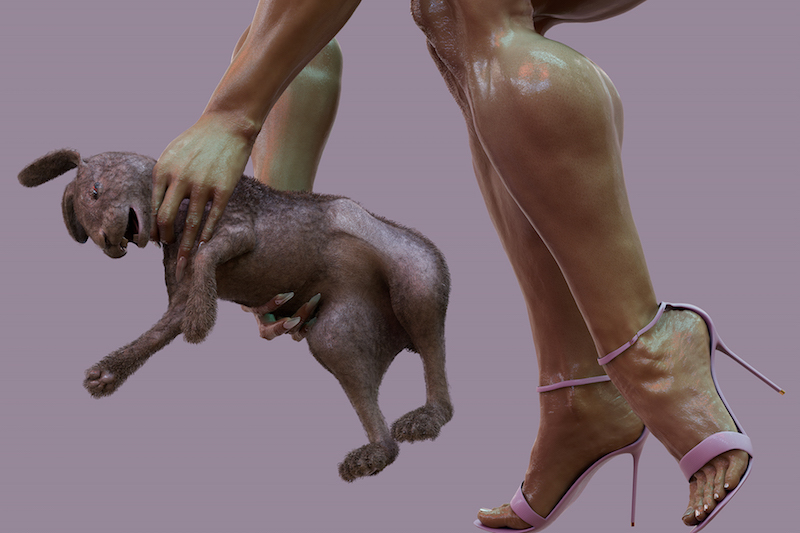
Bassam Issa Al-Sabah and Jennifer Mehigan: ‘Uncensored Lilac,’ 2023, digital render of work-in-progress // Courtesy of the artists
AD: With this shift from personal themes to being slightly removed, how do you think mythologizing or fictioning identity functions in your work?
BIAS: Sometimes I think creating a mythology or another character, and creating a world that feels separate, can still deal with this representation of violence or sadness. How a character or a figure can express emotion without being verbal about it is a way to do that work but to have it exist in a different sphere. It can exist in the sphere of CGI, it can exist in the sphere of world-building and it can exist outside of my identity. I felt that that was important because I wanted the work to push beyond.
My work isn’t specific to someone who’s Arab, my work isn’t specific to someone who went through the American invasion. These things became almost a way to make sure that the work can be read outside of those contexts. Those contexts are still important, and I’m not trying to withhold that information. I guess just, for me, it wasn’t the most important conversation about the work.
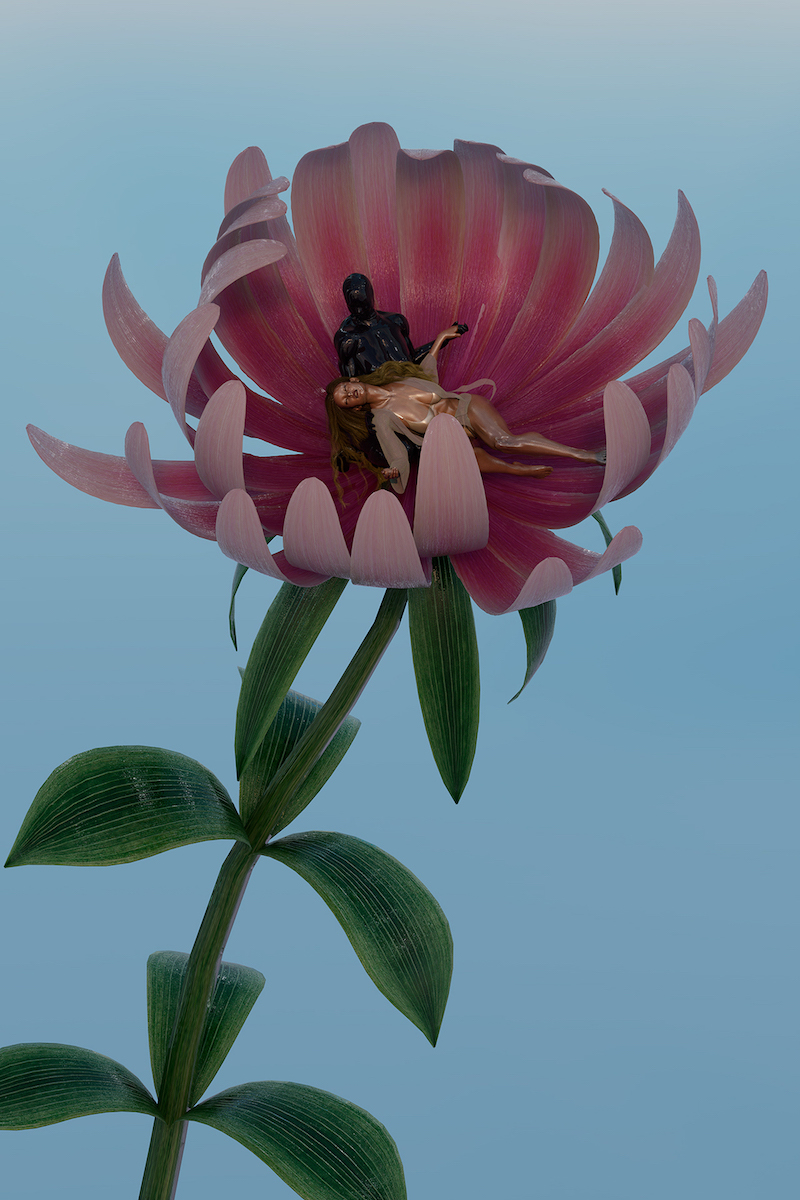
Bassam Issa Al-Sabah and Jennifer Mehigan: ‘Uncensored Lilac,’ 2023, digital render of work-in-progress // Courtesy of the artists
Aoife: How do historical myths feature in your work? In ‘Uncensored Lilac’ you depict goddesses and fictional characters, does that influence the materiality of your work?
BIAS: I’m always interested in how a work can create an aura around itself. I’m really interested in reading about pop culture and there’s this book about Madonna that’s called ‘Madonna as Postmodern Myth.’ It was this really interesting thing about how you can create a mythology around yourself. I’m not interested in doing that about myself, but I’m interested in doing that around the characters that I’m building. Jennifer [Mehigan] and I always talk about The Sims, you create these characters, and all of a sudden, you just let them loose in this world. We’re not interested in cosplaying suburbia so our worlds are always very strange.
Jennifer wanted the characters in the film to come across not as passive but to come across like they have a chip on their shoulder. One of the earlier touchstones of the work was the goddesses Demeter and Persephone. Persephone is Zeus and Demeter’s daughter and Zeus promised Hades one of his daughters. At some point, Hades swallows Persephone into the ground while she’s picking daffodils or some spring bulb flower. Demeter, when she can’t find her daughter, decides to freeze the Earth until she can get her daughter back. While that’s happening, Hades feeds Persephone a pomegranate, which was deemed the fruit of the underworld. Persephone becomes cursed to live six months underground and six months above ground, becoming the personification of spring. Jennifer talks a lot about this idea in mythology where there’s a relationship between feminine figures and the fertility of the land, rather than fertility of the body.
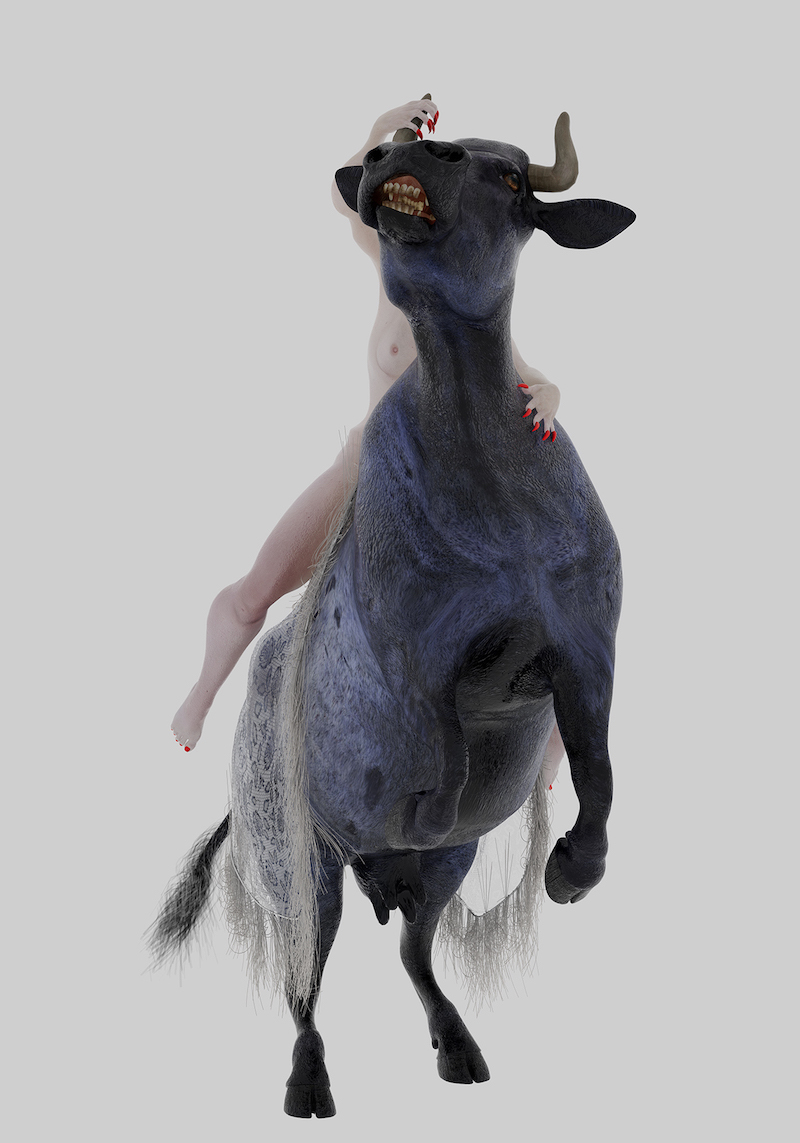
Bassam Issa Al-Sabah and Jennifer Mehigan: ‘Uncensored Lilac,’ 2023, digital render of work-in-progress // Courtesy of the artists
AD: How do you think about your 3D objects? Do you see them as emerging from the video work or existing outside of the work?
BIAS: I tried to stay mindful that I didn’t want to fall into this trope of making a film and pulling things out of it and just bringing them into this space and creating this dialogue. I wanted these creatures to exist as themselves and then the film exists and they create a language and a conversation between each other.
I think that there’s something in that where you can try and twist things a little bit. Say with CGI, especially the way I use it, where everything is super glittery, super smooth and very polished. I like the sculptures to sit at a different angle. With this show, there’s going to be the film which has this incredible physicality of these figures moving, but then to think about the flatness of the character in relation to them. So, the cutouts are perfectly rendered, but I think their flatness holds an energy that’s so different to the film.
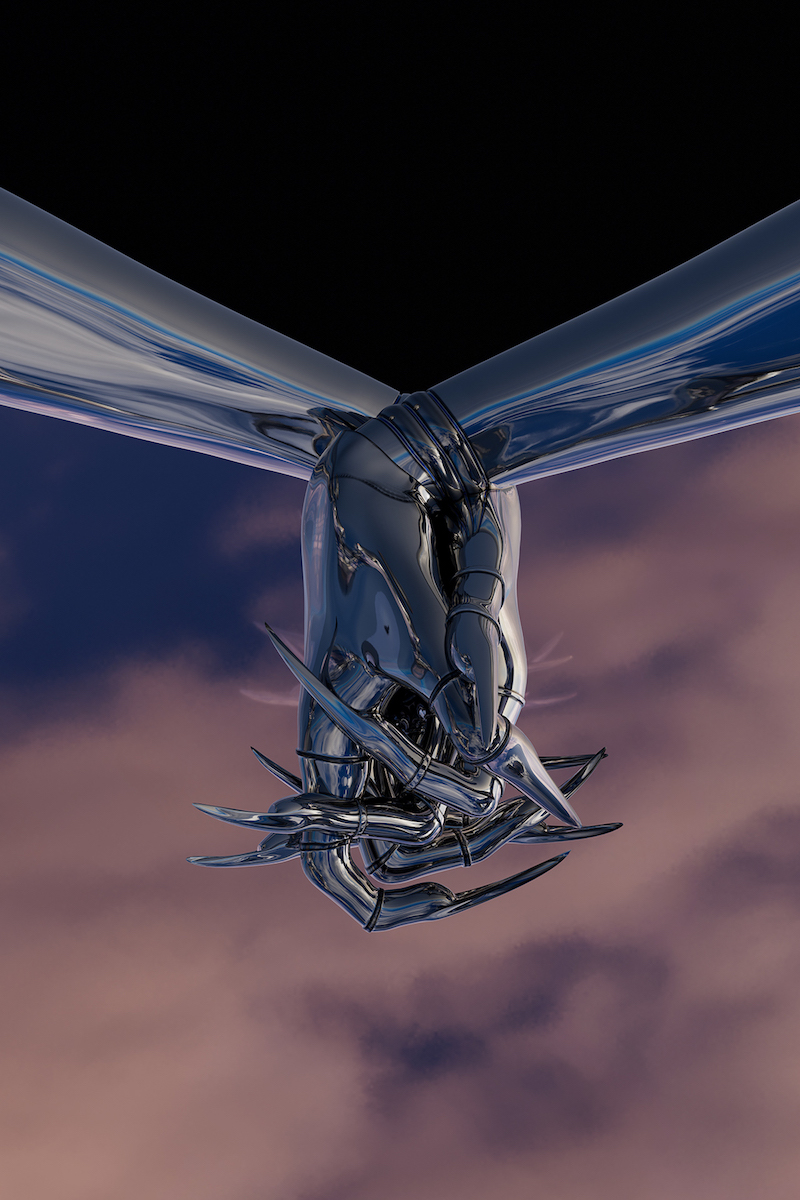
Bassam Issa Al-Sabah and Jennifer Mehigan: ‘Uncensored Lilac,’ 2023, digital render of work-in-progress // Courtesy of the artists
AD: You have worked with Jennifer before. Are there any particular practices at the centre of your collaboration?
BIAS: We collaborated a few times before this but this would be the biggest collaboration we’ve done. It’s always been very easy. We’ve had these quite similar experiences, we feel very similarly about how we want the aesthetic of things to go and how they feel, rather than what the outcome is. I always say to her that we finish each other’s skill set very well.
We’ll make mood boards and we’re very specific about not trying to have a reference be too specific. We’ve talked a lot about having the film exist in a lot of exaggerated poses or exaggerating things in the film that can almost feel like these figures are coming from fashion models and how awkward a lot of those poses are in fashion. They’re always hunched over, and their neck is extended too long, which cannot be comfortable, yet it looks really beautiful.
We wanted to see what would happen if the figures in this film constantly communicated that they’re not human, that there is this distance between what a human is and what this figure is. One of the things we talk about is that ultimately what you’re looking at is like a few million triangles. We wanted them to be rendered super beautifully to the point where it becomes almost overwhelming: the skin is very glossy and the hair moves in a way that hair just does not move, but in a way that you would imagine a fashion photograph to. What would this heightened femininity look like if it were contained in these environments?
Artist Info
Exhibition Info
transmediale
Bassam Issa Al-Sabah & Jennifer Mehigan: ‘Uncensored Lilac’
Exhibition: Jan. 31–Apr. 14, 2024
transmediale.de/…/uncensored-lilac
Gerichtstraße 35, 13347 Berlin, click here for map
transmediale
‘you’re doing amazing sweetie’
Festival: Jan. 26–Feb. 4, 2024
transmediale.de/…/sweetie
Various Venues



















